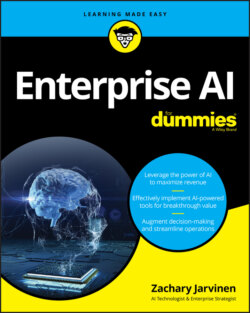Читать книгу Enterprise AI For Dummies - Zachary Jarvinen - Страница 52
Medical diagnosis
ОглавлениеAttempts to apply AI to medicine date back to the 1970s, but a wealth of data is a fundamental prerequisite for effective AI, and the real push to digitize medical records and test results didn’t gain momentum until the twenty-first century. It’s no surprise that the primary application is diagnostics. A 2013 review of three large U.S. studies reported that about 12 million patients, roughly 5 percent, are significantly misdiagnosed per year.
Currently, AI brings machine learning, natural-language processing, and other AI techniques to medical diagnosis.
Traditional breast cancer screening tests involve radiologists examining X-ray film for telltale signs of cancer. It is reliable most of the time, but it produces false negatives (20 percent of the time radiologists fail to find cancer when it is present) and false positives (a false alarm where radiologists mistakenly conclude cancer is present). About 50 percent of women who do annual mammograms get at least one false positive in a ten-year period.
In 2020, Google Health used DeepMind to train a model to recognize cancer in mammogram X-ray in U.K. patients. Compared to human radiologists, it reduced false negatives by 2.7 percent and false positives by 1.2 percent. When they extended the project to U.S. patients, the model reduced false negative by 9.4 percent and false positives by 5.7 percent.
